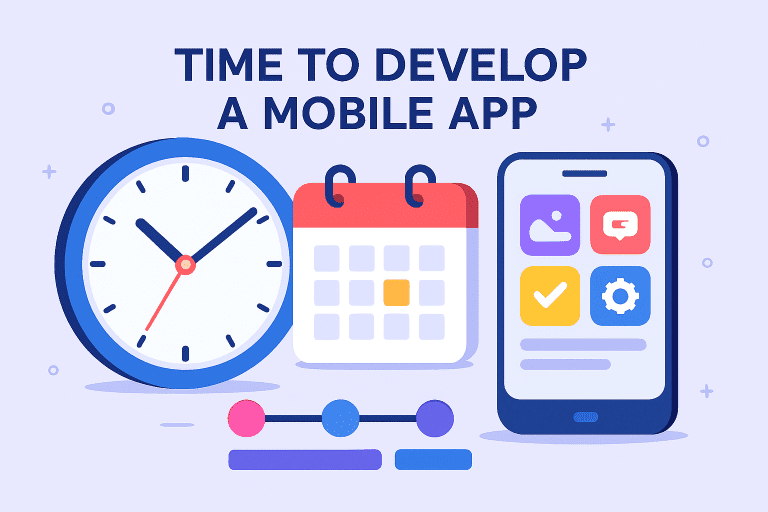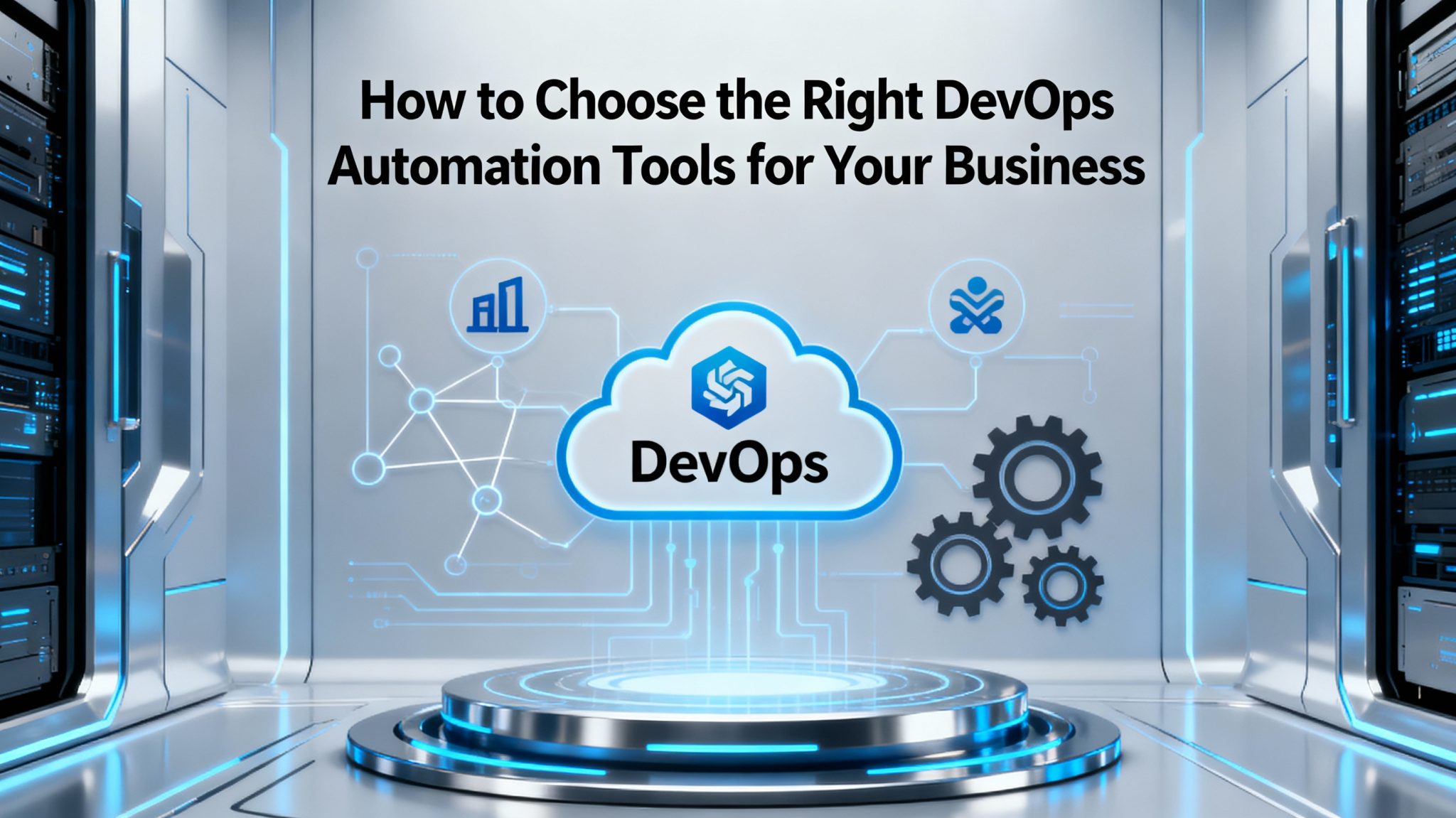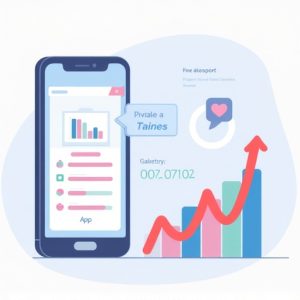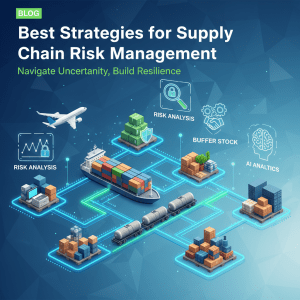Introduction
In today’s digital-first world, mobile apps have become the backbone of customer engagement and business innovation. Whether it’s a food delivery app, a fintech platform, or an AI-powered productivity tool, businesses are investing heavily in mobile applications to capture new market opportunities.
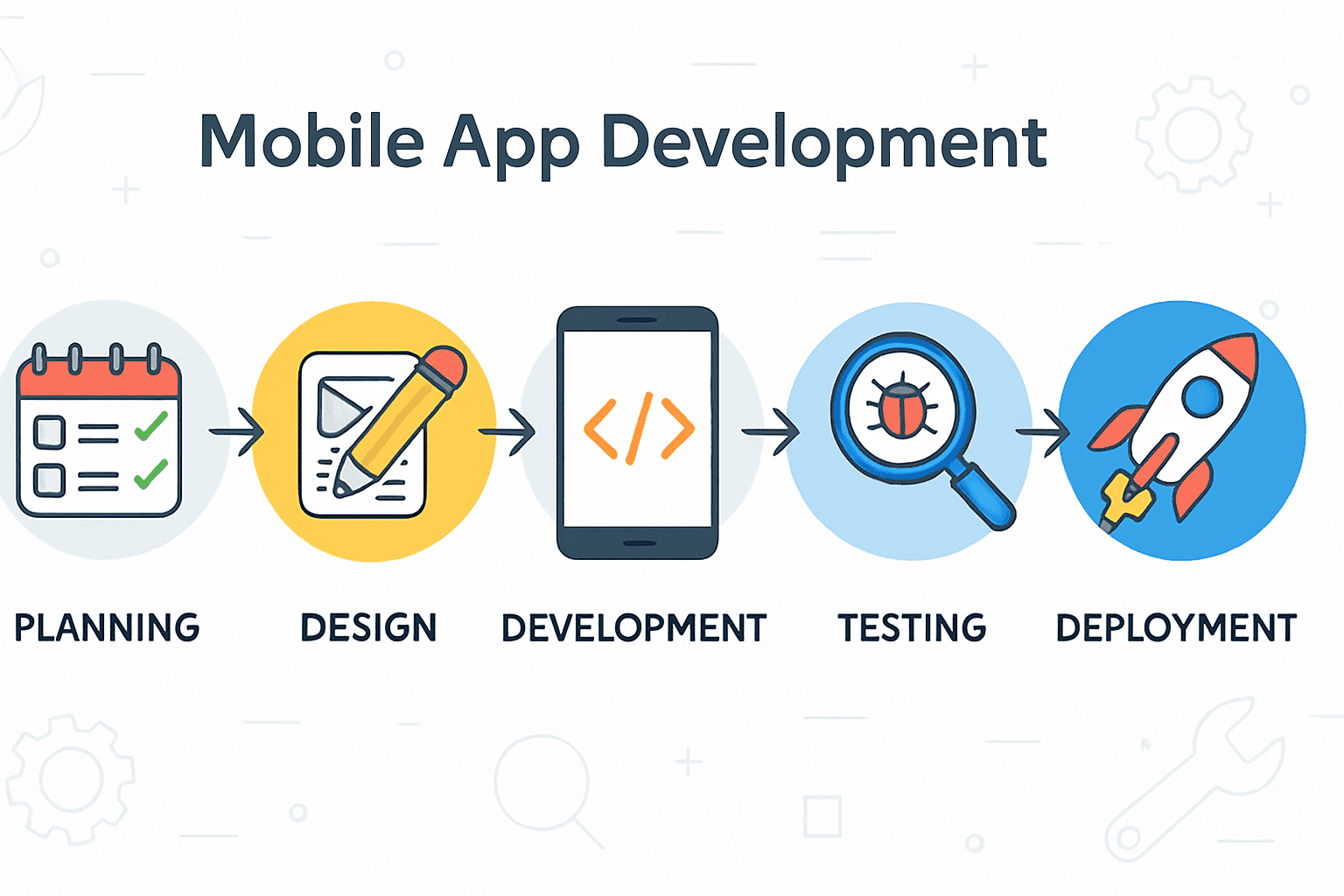
But one of the most common questions that arises during the planning phase is: how long does it take to develop a mobile app? The answer depends on factors such as app complexity, features, target platform (iOS, Android, or both), technology stack, and development methodology.
In this blog, we will break down the step-by-step mobile app development timeline, explain different stages, and highlight how businesses can reduce time-to-market while still delivering a high-quality product. If you’re considering building an app in 2025, this guide will give you a realistic timeline and insights based on best practices.
Factors Influencing Mobile App Development Timeline
The time it takes to develop an app is rarely the same for every project. Each app idea and feature set comes with different timelines. Below are the key factors that directly impact development duration.
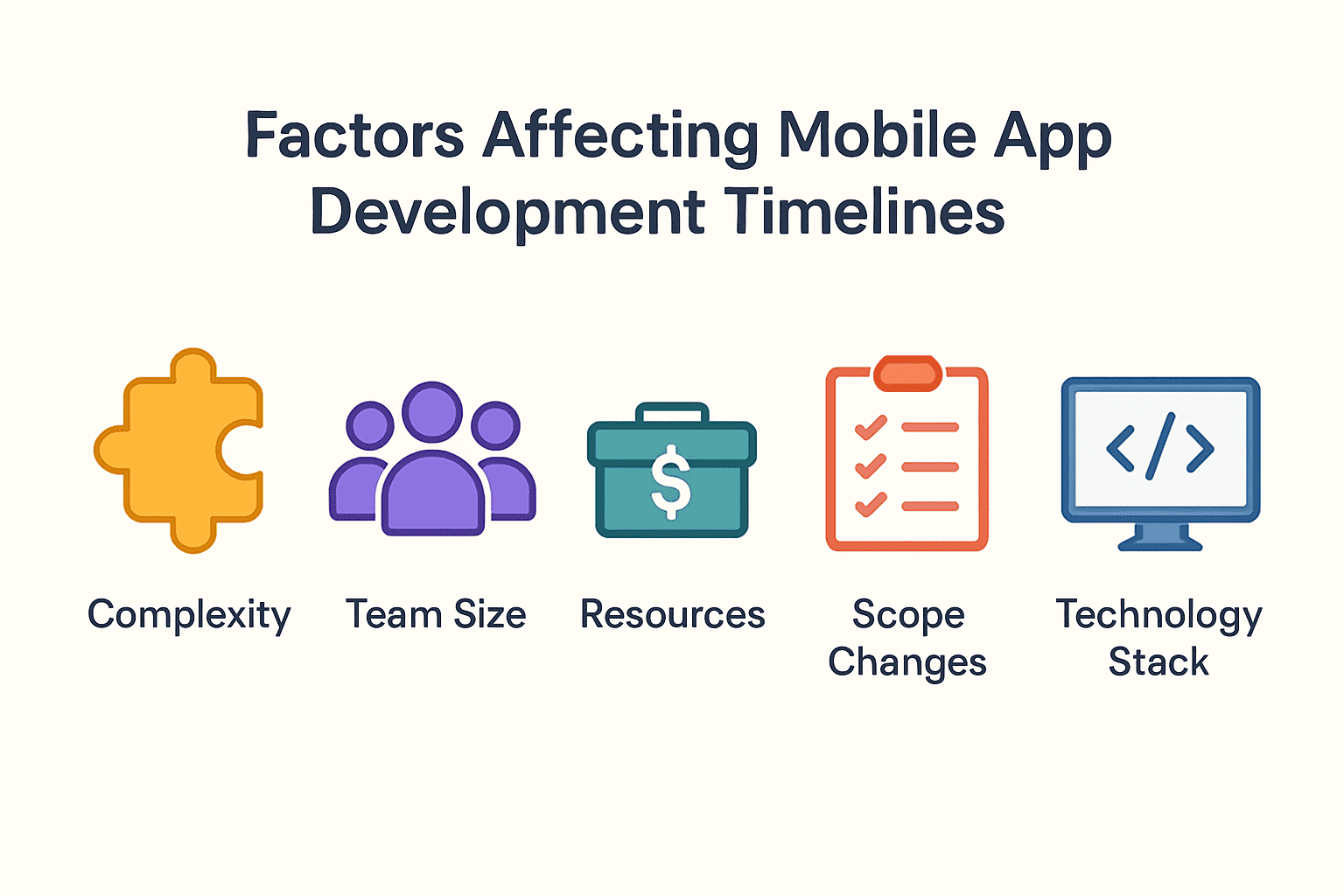
1. App Complexity
-
Simple apps (basic features like login, profile, and information display): 2–4 months
-
Medium-complexity apps (real-time updates, payment systems, API integration, push notifications): 4–8 months
-
High-complexity apps (social media, AI-powered personalization, video streaming, enterprise-level apps): 9–15 months
2. Platforms and Technology Stack
-
iOS only: Faster development due to fewer device variations.
-
Android only: Slightly longer due to device fragmentation.
-
Cross-platform development with frameworks like React Native or Flutter reduces time and cost. (Learn more about frameworks like React Native vs Swift).
3. Team Structure
-
A dedicated development team of UI/UX designers, front-end developers, back-end developers, QA testers, and project managers accelerates timelines.
-
Outsourcing to an experienced mobile app development company (TechOTD Mobile App Services) ensures faster delivery with expert resources.
4. Features & Functionality
Some features add significant time to development:
-
Artificial Intelligence (AI) & Machine Learning integration
-
Cloud storage & synchronization
-
In-app chat & video calling
-
Blockchain-based security features (See Blockchain integration use cases in business)
-
Predictive analytics (Explore Predictive Analytics Development)
5. Testing and Security
-
Security compliance, bug fixing, and testing on multiple devices are crucial yet time-intensive stages.
-
For industries like finance and healthcare, additional testing for compliance adds weeks to timelines.
Typical Mobile App Development Timeline (Step-by-Step)
Let’s break down the average timeline of 1700 words worth detailing into phases followed by realistic time estimates:
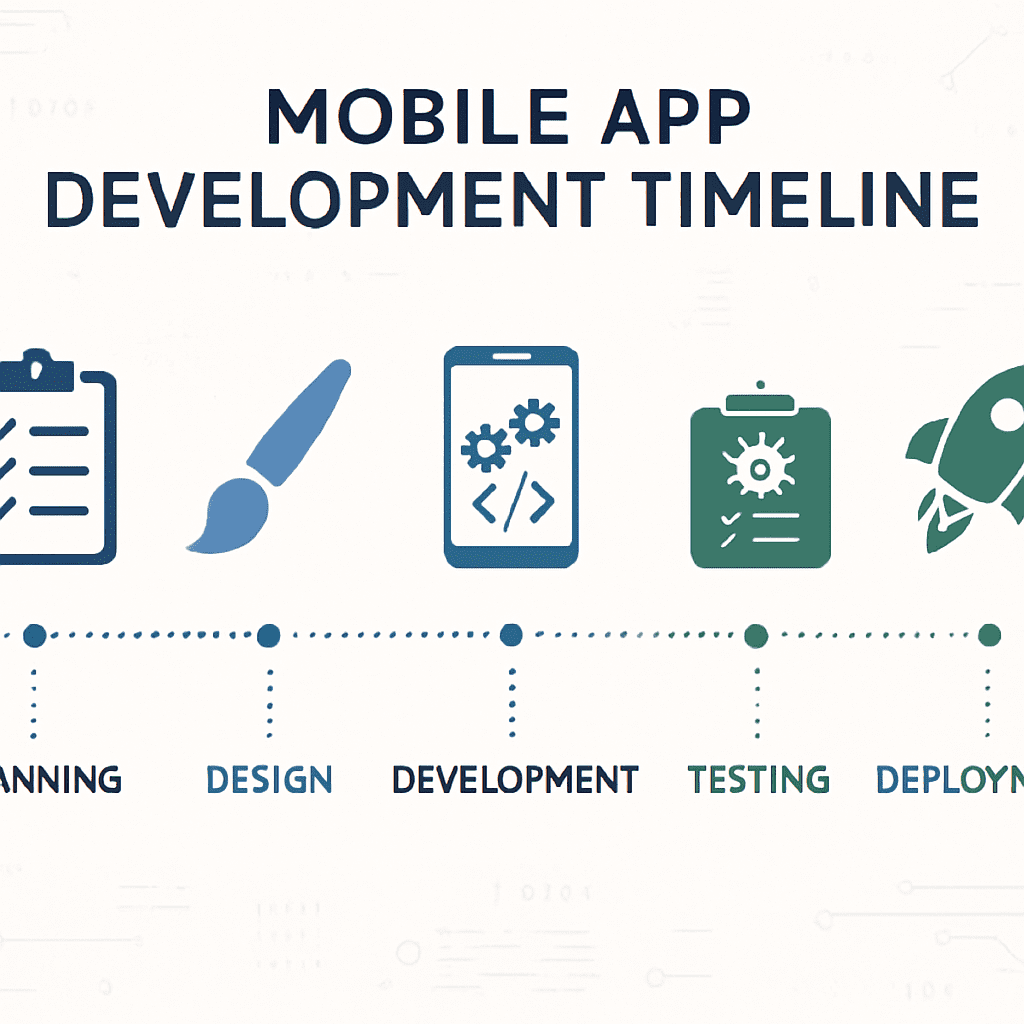
Phase 1: Research & Planning (2–4 Weeks)
-
Analyzing business requirements.
-
Competitor research and feature set prioritization.
-
Technical feasibility study.
-
Choosing the right technology stack (AI, blockchain, cloud, etc.).
➡️ Example: TechOTD follows structured “How We Work” guidelines to first assess business needs (Details here).
Phase 2: UI/UX Design (3–6 Weeks)
-
Wireframes and mockups development.
-
User journey mapping to ensure simplicity.
-
Style guides and interactive prototypes.
➡️ Example: In modern apps, customer journey mapping has become crucial (Future of Customer Journey with AI).
Phase 3: Development (4–12 Weeks or More)
-
Frontend Development: Building the user interface (navigation, forms, dashboards).
-
Backend Development: APIs, databases, servers, integration with AI/ML, NLP, or cloud solutions (Explore TechOTD AI services).
-
Cross-platform support: React Native, Flutter, or native development.
➡️ Example: Flutter development teams speed up app creation significantly (Why hire Flutter teams?).
Phase 4: Testing & QA (2–6 Weeks)
-
Unit testing, integration testing, UI testing, and stress testing.
-
Ensuring compliance with cloud security measures (CNAPP explained here).
-
Fixing errors to guarantee seamless performance across devices.
Phase 5: Deployment (2 Weeks)
-
Publishing on Google Play Store and Apple App Store.
-
Preparing app store optimization (ASO).
-
Submitting for approval (usually takes 7–10 days per platform).
Phase 6: Post-Launch Support (Ongoing)
-
Bug fixes, user feedback improvements.
-
Regular security patches and scalability improvements.
-
Adding AI-driven updates like predictive recommendations or LLM integrations (LLMs in Finance explained).
How Long Does It Really Take? (Overview)
-
Basic App (MVP): 4–6 months
-
Mid-level App: 6–9 months
-
Enterprise/Feature-rich App: 9–15 months
However, innovative approaches such as AI-driven automation (TechOTD AI-powered automation solutions) and agile iterative cycles can help cut down development times without compromising quality.
Real-World Examples
-
Food Delivery Apps
-
Development timeline: 7–12 months
-
Features: GPS tracking, real-time order updates, in-app payments
-
Learn more: Food App Development Costs & Timelines
-
-
Education Apps
-
Development timeline: 6–10 months
-
Features: Video content, gamification, progress tracking
-
Related: Technology in Education for CEOs
-
-
E-commerce Loyalty Apps
-
Development timeline: 6–9 months
-
Features: Rewards, discounts integration, customer analytics
-
Explore in detail: Loyalty App Costs
-
Conclusion
The time it takes to develop a mobile app varies significantly depending on complexity, features, and the technologies involved. On average:
-
Simple apps can take 3–6 months.
-
End-to-end feature-rich apps can take 9–15 months.
Working with a trusted partner like TechOTD ensures a structured, efficient process from planning to deployment with continuous post-launch support. If you are planning an app for 2025 and beyond, the right strategy is to balance speed with quality—leveraging AI, cross-platform frameworks, and expert development teams.
👉 Ready to bring your app idea to life? Contact TechOTD for a free consultation today and accelerate your mobile app development journey.
FAQs
1. What is the fastest way to develop a mobile app?
Using cross-platform frameworks like Flutter or React Native and adopting Agile methodology speeds up development.
2. How do I reduce time-to-market for my app?
Start with a Minimum Viable Product (MVP) focusing on core features, then add advanced features later.
3. Can AI speed up mobile app development?
Yes. AI-powered automation, predictive analytics, and machine learning reduce testing and coding efforts.
4. What makes enterprise apps take longer to build?
Enterprise apps often include advanced features like integrations, compliance, AI/ML, and blockchain, which extend timelines.
5. How much does app development cost?
On average, costs vary between $15,000 and $250,000, depending on feature scope and complexity.
